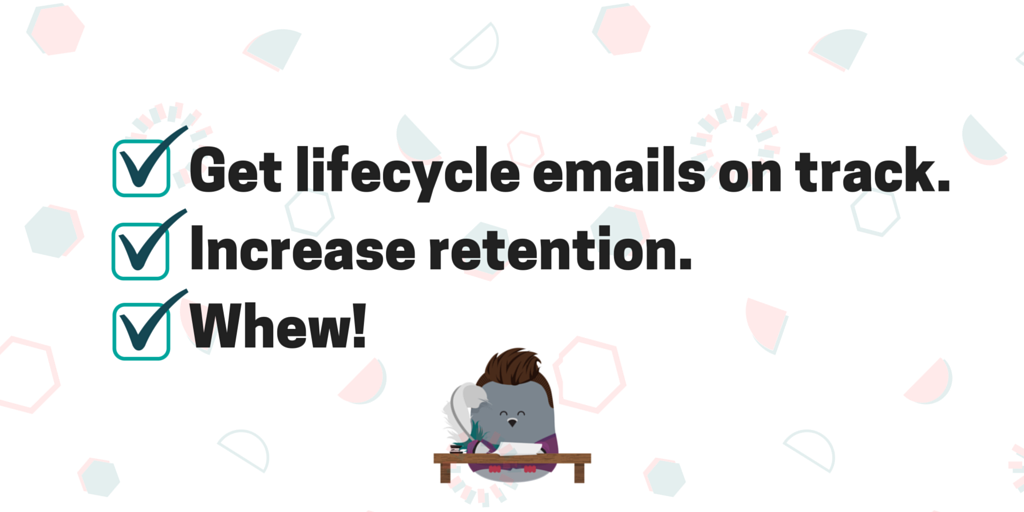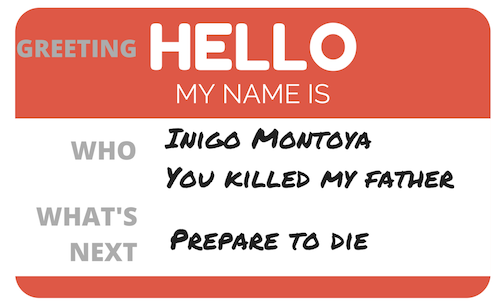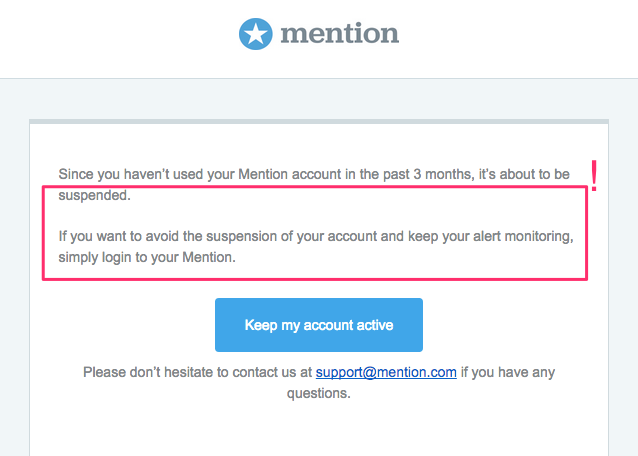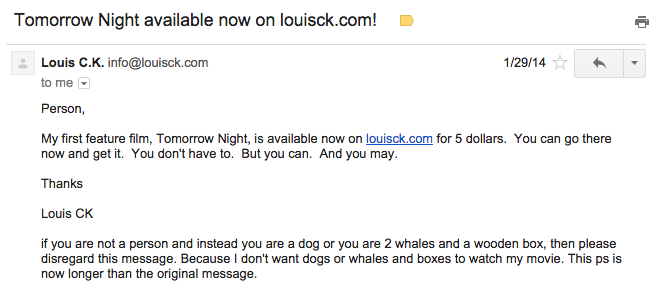One of my favorite learning moments this year was hearing from StatusPage.ioCEO Steve Klein how getting your lifecycle emails right can increase your conversion rate and revenue to the point where you gain the breathing room to concentrate on other priorities.

In this tinselly time of year for reflection and resolutions, I’m reviewing our own lifecycle emails here at Customer.io and thinking about how we can make them work smarter for us. What better time to dig through our posts from the past year to round up our best tips and strategies for creating lifecycle emails that drive customer engagement and happiness.
1. Use the Princess Bride formula for the best welcome emails.
Welcome emails are your chance to create a positive first impression and secure the trust that will fuel a long-term customer relationship. All you have to do is follow the lead of that fictionally famous swashbuckling swordsman Inigo Montoya.
Every welcome should have a greeting, an explanation of who you are, and set up what comes next:
- Hello — the Greeting
- My name is Inigo Montoya. You killed my father. — Who you are: a name and identifying information that provides the context required to make a connection (what you do, your interests, cares, and concerns)
- Prepare to die. — What’s next for the reader? What should they do?

More about how to use The Princess Bride Formula or catch up with our whole class on how to create welcome emails.
2. Get smart about segments.
Stop hollering your message at whoever is out there — and communicate with specific people who are most ready to lend an ear (or eyes) with smarter segmentation. It’s the smarter way to email — cutting a shorter path to better engagement, deliverability, and revenue.
Modern platforms like Customer.io can segment people based on real-time activity and customer lifecycle. If you have a business where your customers are logging in with accounts, there’s no reason to get stuck on static lists that require constant upkeep and syncing or guess at engagement by looking at email opens and clicks.
You have the best chance at relevance when you can respond directly to individual context — so that your message feels personal and relevant rather than random shouts in the dark.
Get inspired with our collection of segmentation recipe ideas at “33 Ways to Personalize Your Emails at Scale.”
3. Don’t just send one email per goal.
People are busy and have more important things to do than deal with the loads of email flying about out there — which means there’s a really good chance that someone will miss your carefully crafted lifecycle email. And even if they do open and read you message, they might not heed your call to action.
If you only send one message for each goal you have, you’re greatly reducing your chances of success.
Send a series of drip emails for important goals that stop once people have taken action. Check out the drip series for iDoneThis, which aims to remind and convert free trial users to upgrade to a paid subscription. It takes more than one try.

The smartest marketers understand that persuasion takes time and follow-up and will not only implement behavioral drips for their conversion goals, but also try different tactics in different emails. For instance, if you’re trying to nudge someone to complete a key activation step, you can send a series of behavioral drip emails that employ different persuasion principles.
Catch up on targeted behavioral drip series in “What You Can Learn from Abandoned Cart Emails to Boost Sales” and different persuasion tactics you can use.
4. Use loss aversion.
Speaking of persuasion, there’s a pretty powerful psychological principle called loss aversion. People hate losing stuff — so much that they’re motivated to avoid it. If your product has a free trial, you can rely on the psychology of loss aversion to motivate people to reengage and convert to a paid subscription.
Here’s a striking example from Mention, a social media monitoring tool.

Mention prompts people to act after a period of inactivity by proposing the suspension of your account altogether. It’s a powerful tactic that both spurs new users who want to avoid that loss to make a decision while filtering out user segments who were probably never going to activate.
More on loss aversion: “The Psychology of Upgrade Emails: Make Something to Lose”
5. Use video to activate and onboard users.
Video and email are a powerhouse combo when it comes to engaging and teaching people. Video can help you improve clickthrough rates, fast-track activation, and make stronger emotional connections. StatusPage.io even boosted trial-to-paid conversion rate by 2.4x by sending onboarding emails with video to get people to try key features.
A quick best practice tip for incorporating video into your emails: don’t embed the video itself into the email since email clients don’t all support it. Instead, use a screenshot or thumbnail with a play button laid over the image and link that to the page with your video.
For more tips and examples, check out “Why You Should Use Video in Onboarding Emails.”
6. Sound like a real human being.
Just because you’re automating messages or represent a business doesn’t mean you can skip out on the actual communication part and sound like a robot. Emails, like all types of great, effective content, take work!
Write like a normal human being, tell stories instead of commanding readers to do your bidding, and show who you are as a brand and an organization.
The comedian Louis C.K. does a great job of sending emails in his voice. It feels personal and resonant, all while promoting his business. He accomplishes this by telling stories, deviating from stock email scripts, and using a super simple, readable text-only layout. Here’s a a quick example:

Learn the complete Email Marketing Lessons from Louis C.K., plus how organizations use similar tactics to get through to their readers.
7. Treat Email as Part of User Experience.
People are checking email way more often than they’re using your product. That’s why behavioral emails are so powerful. As Olark’s Sunir Shah reminds us, what’s paramount is the entire flow that people go through to complete their goal in a product or app.
Once you can reach out to people based on their activity and interactions with your business — you can make that flow a better experience. Your emails are part of your product and user experience.
- Check out 7 examples of retention emails
- Learn how Instacart uses email successfully as part of a broader user experience.
- Why behavioral emails make your job easier.
Have any favorite tips that you’ve incorporated in your lifecycle emails this past year? Share with us in the comments!
To view the original article Click Here

ReplyDeleteWe are a honest and committed team of Marketing, Advertising and IT Consultants. Our specialization is in Business Development, Advertising, Web Designing, Web development, Graphic Designing, Mobile Apps Development, Digital Marketing Expert for more technically complex projects. We're a passionate group of digital marketing and advertising experts.
Digital Marketing